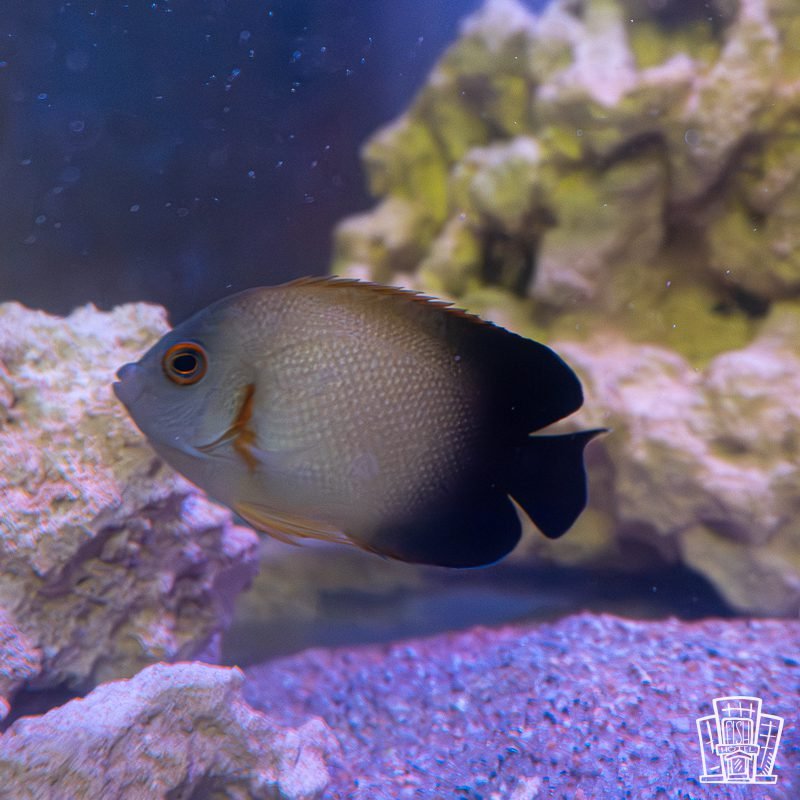Description
- Scientific Name: Centropyge vrolikii
- Common Names: Pearlscale Angelfish, Half Black Angelfish
- Maximum Length: 5 inches (12 cm)
- Minimum Aquarium Size: 70 gallons (265 liters) for a single fish; larger for pairs to support their territorial behavior and swimming needs.
- Foods and Feeding Habits: Omnivorous, primarily feeding on algae in the wild. In aquariums, offer algae-based flakes or pellets with spirulina, supplemented with frozen mysis shrimp or brine shrimp. Feed small amounts 2-3 times daily. Algae-covered live rock encourages natural grazing.
- Reef Safety: Not reef-safe; they may nip at stony corals, soft corals, and clam mantles. Best suited for fish-only tanks.
- Temperament: Semi-aggressive, particularly toward other angelfish or similar species. Best kept singly or in pairs, introduced simultaneously. Pair with peaceful, dissimilar tankmates.
- Description: The Half Black Angelfish is a striking species for marine tanks, known for its two-toned coloration. Its body is pale greyish to brownish in the front, darkening to black towards the tail, with whitish scale centers giving a pearlescent effect. The gill slit and pectoral fin base are orange, and the dorsal, anal, and caudal fins have blue margins. Native to the Indo-West Pacific, from East Africa to Indonesia, they inhabit lagoons and seaward reefs in coral-rich areas at depths of 1-40 meters. Their curious nature and need for hiding spots make them a rewarding choice for aquarists with experience managing their dietary and territorial demands.
Fun Facts:
- Named after the Dutch anatomist Willem Vrolik, a friend and colleague of the species’ describer, Pieter Bleeker, in recognition of his contributions to natural history.
- They exhibit protogynous hermaphroditism, where the dominant female can change sex to male if the group loses its leader, ensuring reproductive continuity.
- In the wild, they form monogamous pairs that defend their territory together, a rare social structure among angelfish that aids in survival and mating success.





